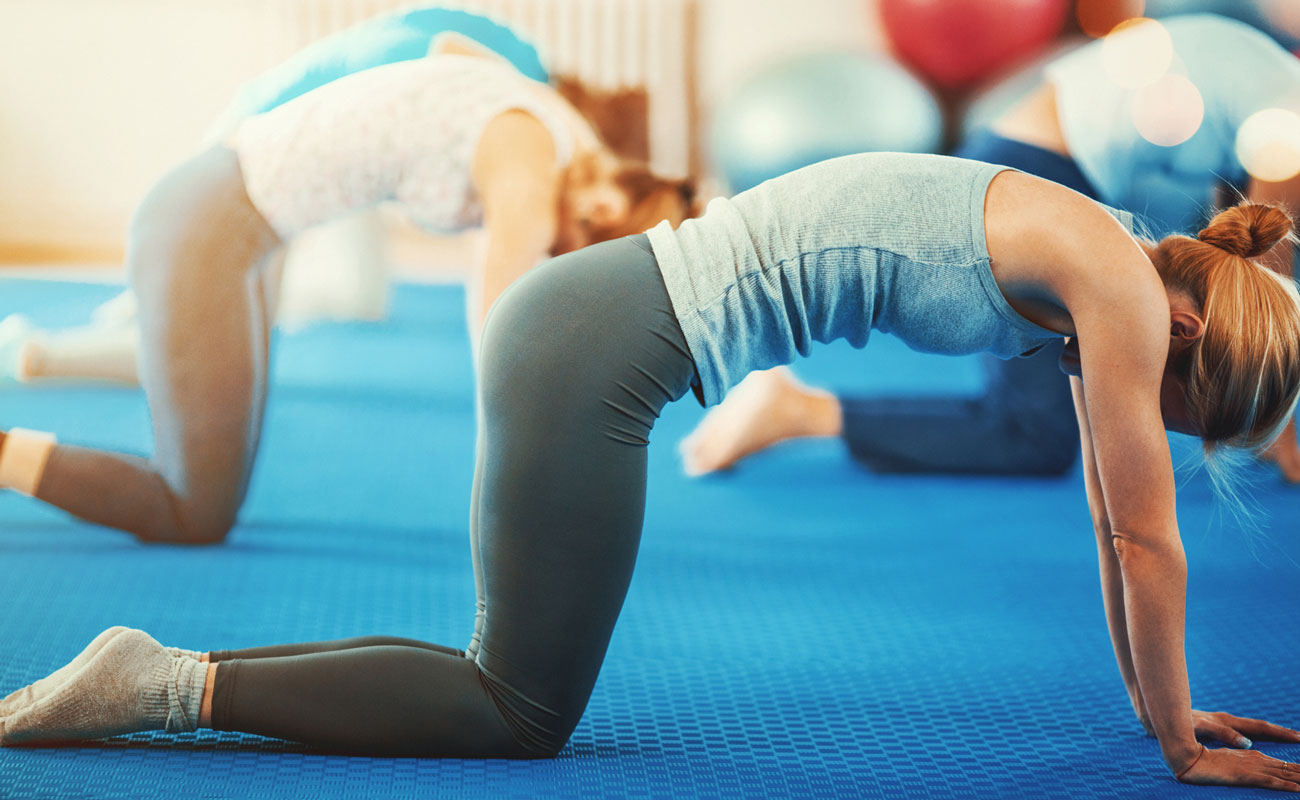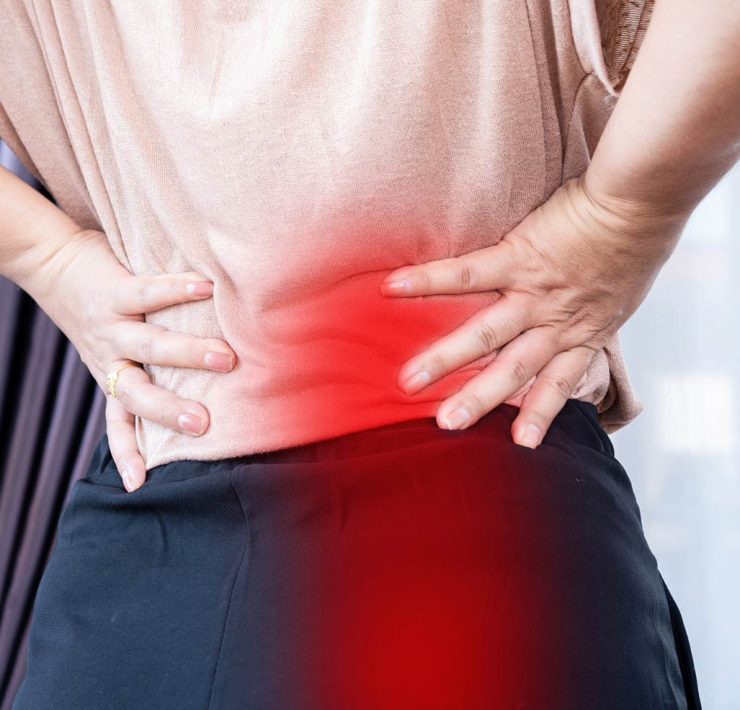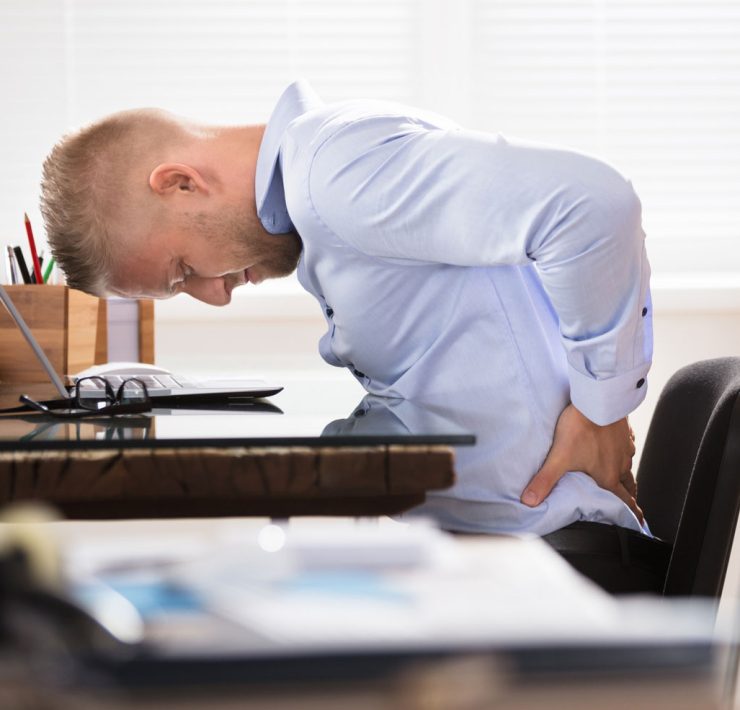The spine is the pillar of the body. Every movement we make engages the spine. It provides the foundational support for the body to move, stand and keeps the head, trunk and legs in alignment. It also acts as a protective sheath for the spinal cord, the main conduit of the nervous system and for some internal organs as well. Despite it being such an integral part of the body, spinal health is not something people think about enough. And if you’ve ever experienced any kind of neck or back pain, you know how badly it can affect the quality of your life, not to mention the mental stress of not being able to do the things you normally can.
By age 25, one in four people shows some level of degeneration within the discs—and two-thirds of adults age 40 show disc deterioration. By the age of 60, ninety per cent are affected. This is said to be a normal side effect of aging and gravity over the years. At any age, protecting spine health should be a top priority.
Here are the 8 most powerful practices for supporting spinal health:
1. Maintain an Active Lifestyle to Keep the Spine and Surrounding Joints and Muscles Supple and Strong
It is important to focus on strengthening and stretching the body’s muscles that support the spine as this can take pressure off your lower back. Lower back pain is the leading cause of disability worldwide. These top 3 most spine-friendly exercises should be an integral part of your lifestyle:
- Strength training for core
- Pilates
- Yoga
These exercises target your core muscles located deep in the abdomen and pelvic area, which wraps around your lower back and forms a girdle of support for the spine. And it can reduce the frequency and intensity of flare-ups for those with already existing chronic spinal issues. So it is important to keep the spine flexible and strong to prevent or alleviate any physical problems with your vertebrae or discs.
2. Don’t Sit for Long Hours, to Prevent Excessive – and Imbalanced – Pressure on the Spine
Thanks to the pandemic, many of us have shifted to a hybrid or remote work status. While home-based work has its benefits, it also frequently comes with a reduction in time spent on your feet and a subpar ergonomic setup. When seated, the discs in the lower spine are loaded with more pressure than in a standing, and long periods of sitting can create or aggravate a painful back condition. To ensure your spine doesn’t suffer:
- Take a movement break at least once an hour. Movement fuels the spine and keeps it healthy (while also keeping your ambient calorie burn from falling into a slump).
- Make sure your desk chair has proper lumbar support.
- Invest in a standing desk so you can take a break from sitting, but keep working!
- Slide an under-desk walking pad under your standing desk to straighten up your spine while also reaping the benefits of walking—all while staying in your zone!
3. Keep a Fine-Tuned Spine with Regular Massage
Massage has a range of benefits for the spinal area, like relieving tension by loosening tight muscles and connective tissues, increasing blood circulation, and boosting feelings of relaxation. A 2017 study found that adults who were 57 years and older were likely to experience “clinically meaningful changes” for lower back pain and that massage therapy is an effective treatment. And research proves that moderate pressure massage, like a Swedish massage, is necessary to gain the diverse benefits of massage as compared to a light touch massage.
4. Support Your Spine Properly During Sleep
While you’re sleeping, the spine that’s been working to support your body all day is also resting and recovering. Get the most from this crucial rest period by providing your spine with the optimal ergonomic conditions. Here’s how:
Invest in the Right Mattress
Your mattress can make or break your spinal health, and most adults require a mattress that’s more supportive than squishy. Softer mattresses allow the spine to sag and lose its natural ‘S’ shape. A firm or medium-firm mattress supports the natural curvature of the spine, so you’ll get a better night’s sleep and arise with a stronger spine.
Support Yourself with Pillows
When tucked in the right places, pillows can provide targeted ergonomic support to keep your resting spine naturally aligned.
- Back sleepers: Place a pillow under the knees to reduce stress on the lumbar spine (low back).
- Side sleepers: Place a pillow between the knees to keep the hips aligned and prevent the spine from twisting. Make sure the pillow under your head is positioned to keep your neck straight and not tilted toward one shoulder. You may also benefit from a pillow to hug, to keep your chest from curling inward, which can strain the shoulders and inhibit breathing.
- Stomach sleepers: If you care about your spine, just don’t sleep on your stomach.
5. Maintain a Well-Balanced Diet and Healthy Weight to Feed Your Spine the Nutrients it Needs
Your spine is, of course, made up of bones (vertebrae) stacked neatly on top of each other, so bone-healthy nutrition is essential for a strong spine.
To support all your skeletal parts, be sure to eat foods rich in:
- Calcium, such as dairy products and fortified plant-based milks, yogurt, winter squash, edamame, almonds, dark leafy greens
- Vitamin D, such as fatty fish and fish liver oils; fortified orange juice, milk, and plant-based milks; egg yolks
- Potassium, such as leafy greens, beans, nuts, starchy vegetables like winter squash
Avoid or reduce intake of foods that cause inflammation, such as:
- Red meat
- Refined sugar and carbohydrates
- Processed foods like packaged snacks, soft drinks, and pre-cooked meals
Increasing the intake of anti-inflammatory food choices like plant-based foods that are also naturally low in calories can also help discourage excessive weight gain. This is particularly important as being overweight or obese can put pressure on the spine, contribute to problems that result in long-term pain and it can also slow down recovery from injury.
6. Wear Shoes That Support Your Whole Body – Not Just Your Feet
Shoes can play an important role in supporting your spine—especially the lumbar portion. Good shoes that have the right support help the spine and body remain in alignment. Here are some important footwear considerations:
- Heel height: Wearing high-heels long term causes the lumbar spine’s lordotic curve to increase, which causes back pain, so footwear with low heels is most beneficial.
- Stability: Avoid ill-fitting shoes that are either too loose or too tight. A good fit is snug with a strong grip on the ground which helps provide a strong base for the spine, especially to those who over-supinate (ankle turns in) or over-pronate (ankle turns out). Consider shoe orthotics or insoles if required for more balance.
- Comfort: Walking with uncomfortable shoes can cause stress to build up in our discs and joints. Consider shoes with shock-absorption, to provide protection and comfort against the hard impact of concrete.
The best shoes for lower back comfort:
- Ergonomic shoes
- Rocker bottom shoes
- Prescription shoes
The worst shoes for the lower back:
- High heels
- Flat shoes with no insoles
7. Quit Smoking to Increase Spinal Resilience and Reduce Pain and Injury Risk
Bad news for the vapers and smokers out there – not only are you damaging your lungs, but people who smoke report higher back pain levels than non-smokers. Also, research shows that smokers have tougher recoveries when something goes wrong with their spine, like issues with wound healing and far more frequent recurrent disc herniation. This is because nicotine can shrink blood vessels, which restricts the flow of essential nutrients like calcium, to the spine. Prolonged smoking will eventually cause the vertebral discs to degenerate and bulge or rupture. This process can lead to degenerative disc disease (DDD) which can cause pain and stiffness in your spine and lower back pain. So for the sake of your spinal health (and overall health), put out that cigarette for good.
8. Manage Your Stress for a Better Aligned, Pain-Free Spine
Never underestimate the connection between your mind and body. A 2021 study of 8,000+ people found that those experiencing severe stress had a 2.8-fold increased risk of chronic lower back pain compared to the general population. So it is important to manage your stress with activities like meditation, yoga, going for a walk, spending time with loved ones and doing the things that make you most happy – because if you’re happy, so is your spine.
These are simple but powerful health practices to maintain a healthy spine and an overall healthy lifestyle will help you continue to do the things you love to do in the long run. And if you are someone who has spinal issues and/or is undergoing medical treatments, consider these practices to boost the healing process. Of course, always consult with your doctor before trying anything new to make sure it’s safe for you.







